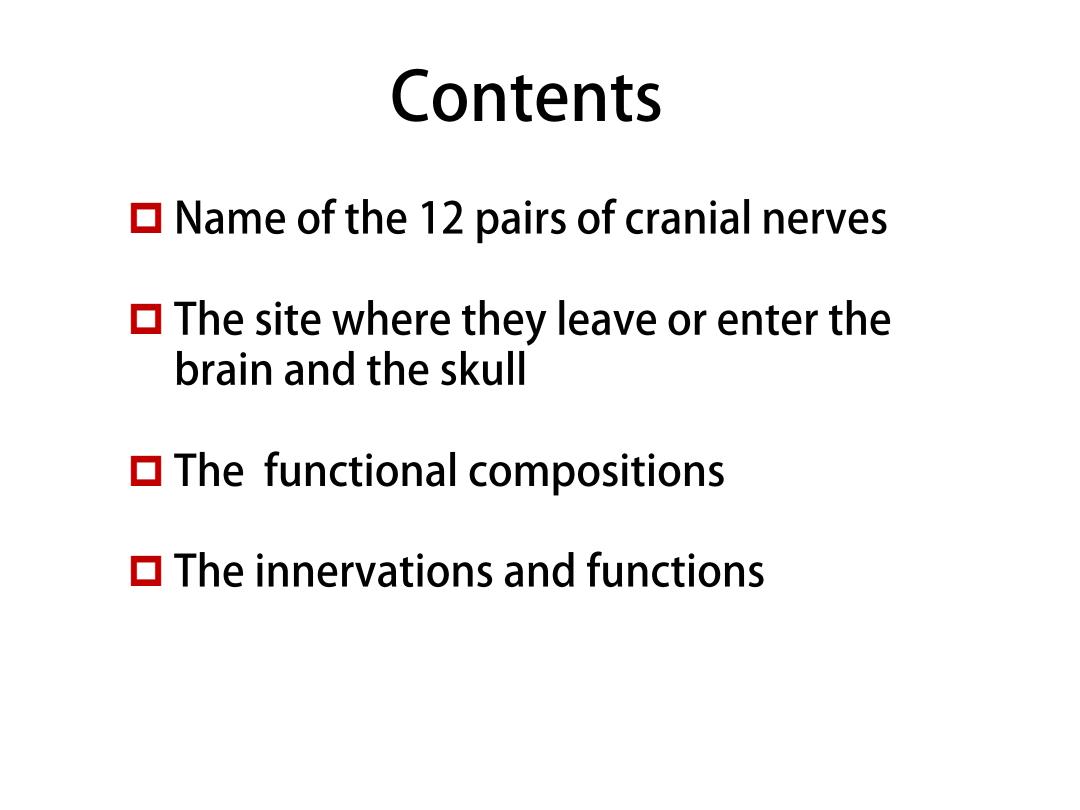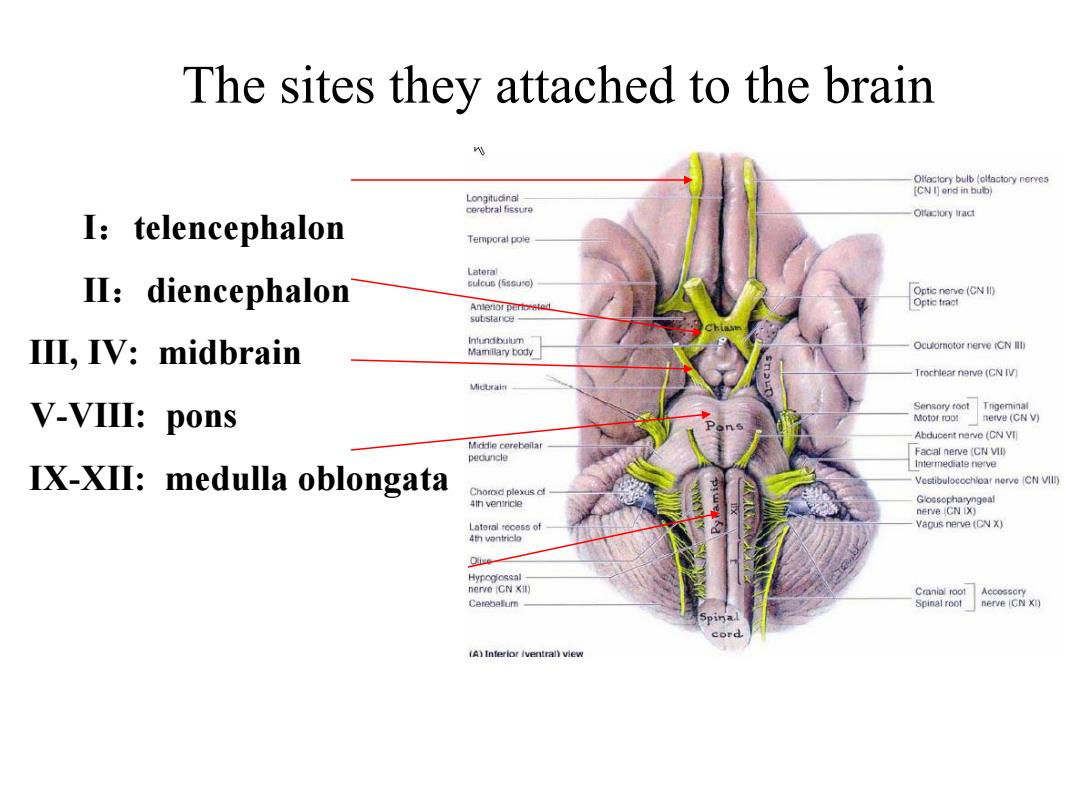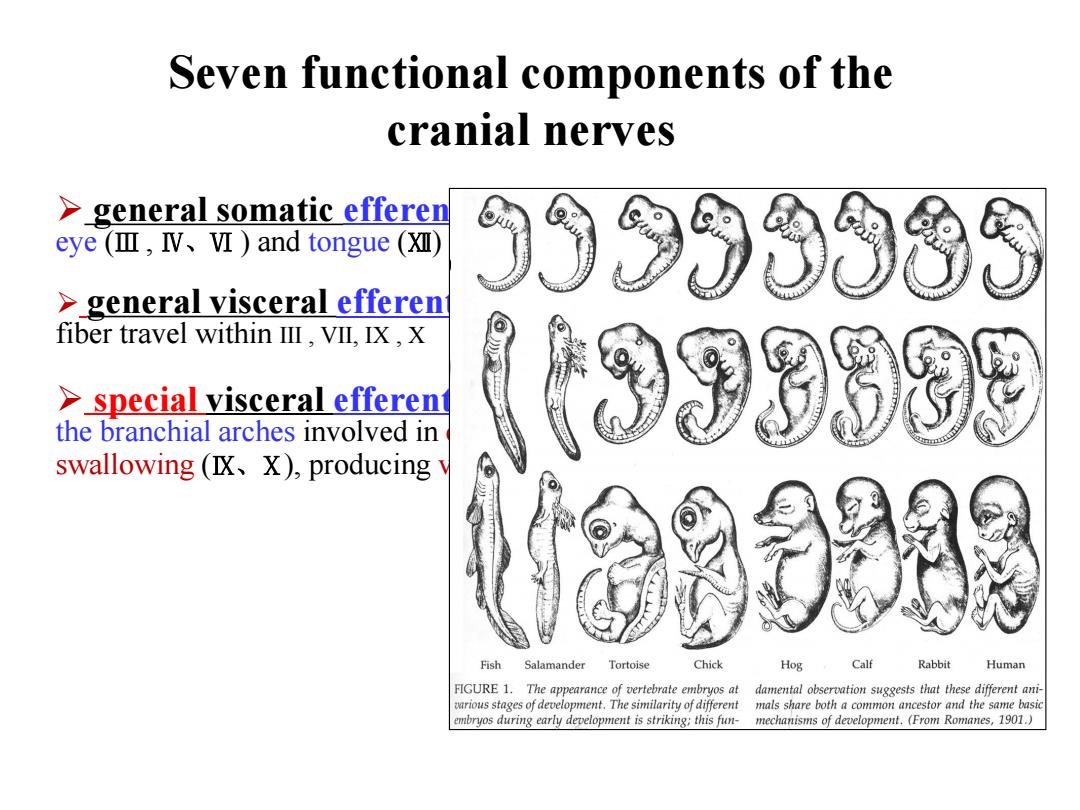
Cranial Nerves
Cranial Nerves

Contents Name of the 12 pairs of cranial nerves The site where they leave or enter the brain and the skull The functional compositions 口 The innervations and functions

夜思热经onu The name and the order 车神经ear6 是热0-将就c急 I olfactory nerve 热c经」 Ⅱoptic nerve Ⅲoculomotor nerve IV trochlear nerve V trigeminal nerve VI abducent nerve Ⅶfacial nerve VI vestibulocochlear nerve 煎底防格s IX glossopharyngeal nerve X vagus nerve XⅪ accessory nerve XⅫhypoglossal nerve 一彩排经 爱osu
Ⅰ olfactory nerve Ⅱ optic nerve Ⅲ oculomotor nerve Ⅳ trochlear nerve Ⅴ trigeminal nerve Ⅵ abducent nerve Ⅶ facial nerve Ⅷ vestibulocochlear nerve Ⅸ glossopharyngeal nerve Ⅹ vagus nerve Ⅺ accessory nerve Ⅻ hypoglossal nerve The name and the order

The sites they attached to the brain &sia2mtietboynenes e2ra I:telencephalon Temporal pole II:diencephalon d 8aeoNn Ⅱ,IV:midbrain Ocuomotor nerve CN V-VIII:pons V) Abducent nerve (CN VI) IX-XII:medulla oblongata Vestibulocochioar nerve CN VIll) 9eesd evC of Vaous nerve (CN X) Hypogiossal nerve iCN Xil) amce8刘 (A)Interior iventral)view
Ⅱ:diencephalon Ⅲ, Ⅳ: midbrain Ⅴ-Ⅷ: pons The sites they attached to the brain Ⅸ-Ⅻ: medulla oblongata Ⅰ:telencephalon

Seven functional components of the cranial nerves general somatic efferen eye(Ⅲ,V、I)and tongue(Ⅻ) 99888 >general visceral efferen fiber travel within III,VII,IX,X special visceral efferent 88 the branchial arches involved in swallowing (IX.X),producing v Fish Salamander Tortoise Chick Hog Calf Rabbit Human FIGURE 1.The appearance of ertebrate embryos at damental observation suggests that these different ani arious stages of development.The similarity of different mals share both a common ancestor and the same bas embryos during early development is striking;this fun-mechanisms of development.(From Romanes,1901.)
general somatic efferent fiber (GSE): striated muscles involved in eye (Ⅲ , Ⅳ、Ⅵ ) and tongue (Ⅻ) general visceral efferent fiber (GVE): preganglionic parasympathetic fiber travel within Ⅲ , Ⅶ, Ⅸ , Ⅹ special visceral efferent fiber (SVE): striated muscles derived from the branchial arches involved in chewing (Ⅴ), making facial expressions (Ⅶ ), swallowing (Ⅸ、Ⅹ), producing vocal sounds (Ⅹ) and turning the head (Ⅺ) Seven functional components of the cranial nerves